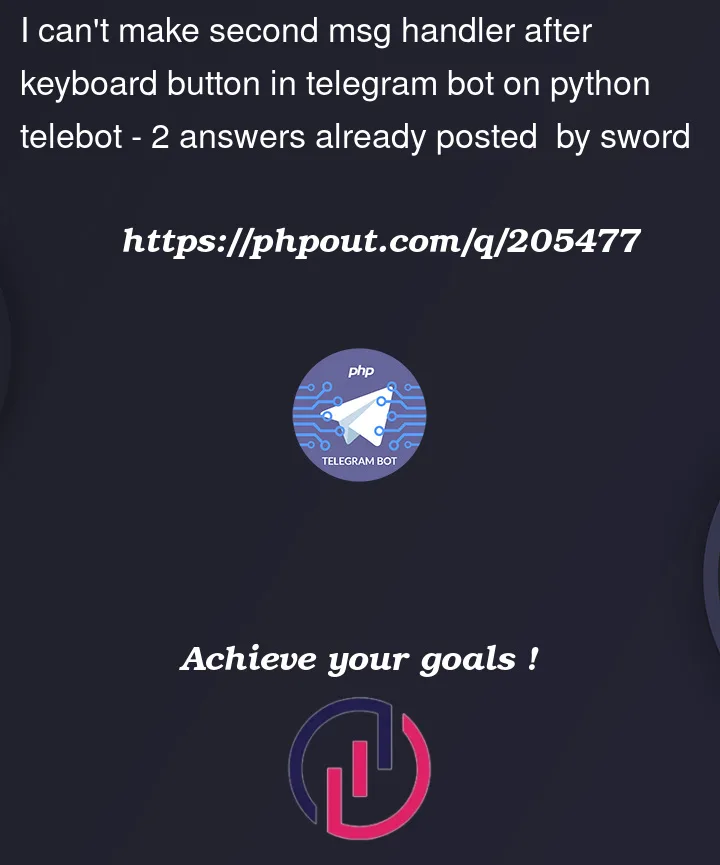@bot.message_handler(content_types=['text'])
def get_text_messages(message):
if message.text == "/start":
begin = types.InlineKeyboardMarkup()
namebutton = types.InlineKeyboardButton(text="Name urself", callback_data="nm")
begin.add(namebuttonl)
@bot.callback_query_handler(func=lambda call: True)
def beginning(call):
```@bot.message_handler(content_types=['text'])
def get_name(message):
if call.data == "nm":
bot.send_message(message.from_user.id, "Introduce urself")
global name
name = message.text
bot.send_message(message.from_user.id, name)
bot.polling(none_stop=True, interval=0)```
I have problems with second message handler. When button appears, I click on it and nothing happens.
After clicking on it I expect to get message from bot, where it askes about name, and then saves answer in variable.
I tried to remove second handler, to change places of some lines.




2
Answers
I am not an experienced callback query user, but here’s how I understand it: each button should have a unique callback_data, by which the
callback_query_handlerrecognizes which action to perform next. No additional reaction from the users is expected and waited for in this process. So the sequence of actionsask for the name -> wait for the name to be typed in -> reactis not what InlineKeyboard does. It’s more ofask for the name (provide choices) -> wait for the user to make a choice -> react.I’ve tried to modify your code a bit for it to start following this sequence:
(Note that the syntax I used for
beginningis a bit different: there’s no nested function. I guess this is why NOTHING happened when you pressed the button, instead of something strange happened)However, in this case you should list all the possible names in the InlineKeyboard buttons. I understand, that this is probably not acceptable.
There is an alternative outside of callbacks in this –
register_next_step_handlerdocumentation.This function actually allows to wait for the next message and run your defined functions on this message.
For example:
Probably register_callback_query_handler does something similar from the user’s point of view, but I haven’t tried it yet, so not sure. If you end up trying it – please tell if it helps.
The problem is that you put your handlers inside the body of other functions, which is wrong. You need to move all handlers to one place. And I recommend using register_next_step_handler to register the next step in user/bot interaction. Here is a working code: